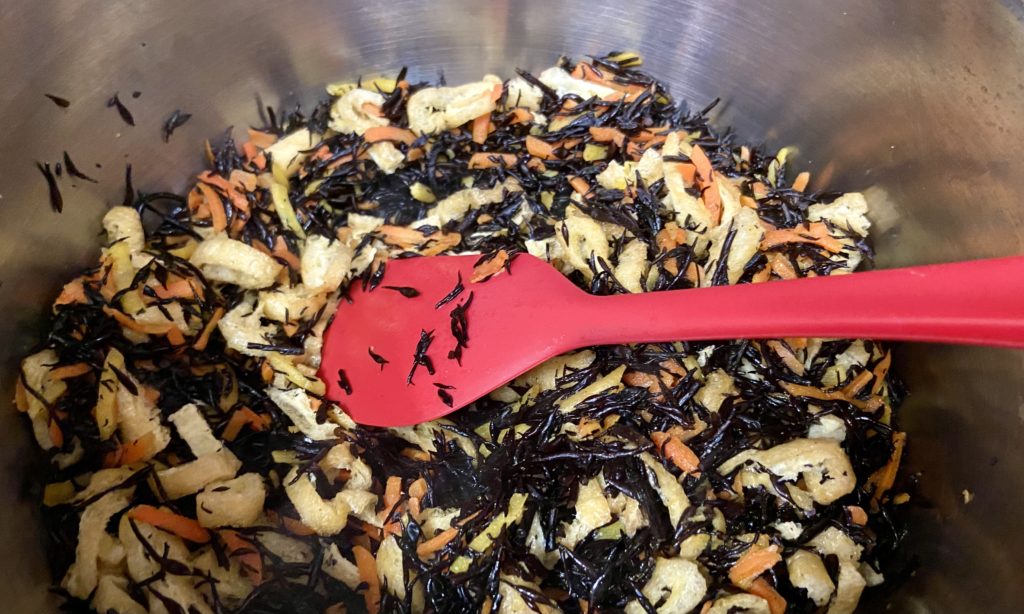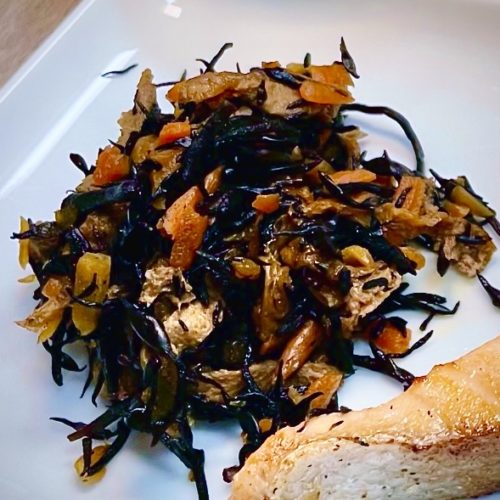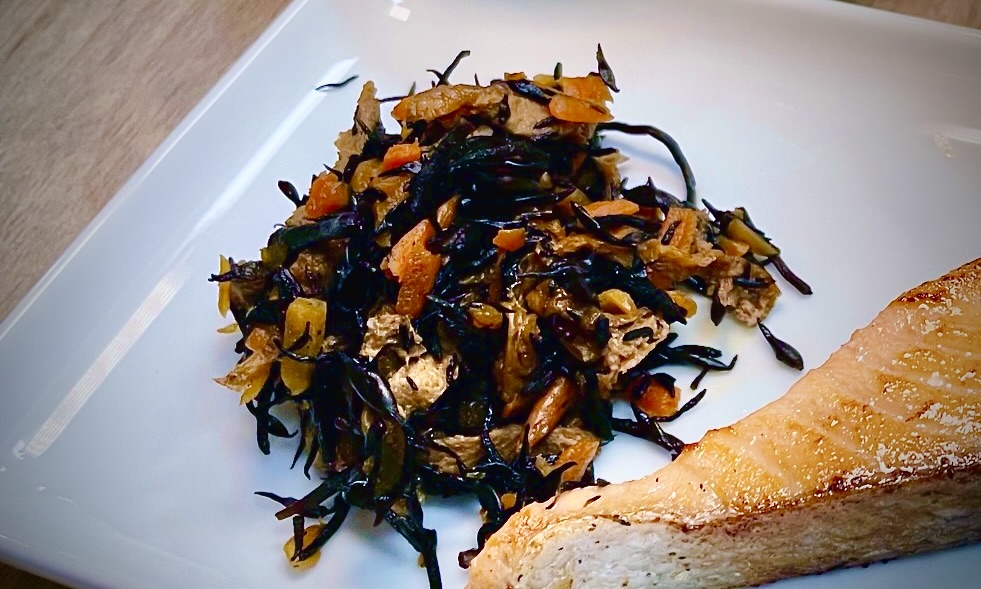Another “nimono” dish but one that tastes wildly different. This recipe uses a special ingredient called Hijiki Seaweed.
Hijiki is a type of seaweed made of small grain-like shape pieces and is sold in small black packages. A little goes a long way with hijiki since the little black grain-shaped pieces expand in volume almost 10x from its dried size.

The flavor is relatively mild (milder than wakame) but with a more solid texture, it is often mixed with other ingredients to create separate side dishes or as a topping to rice-based dishes.
The first time I ate hijiki nimono was in an onigiri from Onigilly. I didn’t know what to expect but it was sweet and savory and the perfect kind of flavor balance you want in an onigiri.
My recipe is slightly less sweet since I don’t like overusing sugar.

Simmered Hijiki Nimono
Equipment
- 1 large pot
Ingredients
- 1/2 cup dried hijiki
- 4 cups water for soaking
- 3-4 aburaage (deep fried tofu pouch) see notes
- 1-2 carrots
- 1 TBSP avocado oil or other neutral-flavored oil
- 1/3 cup shelled edamame
- 2 TBSP toasted sesame seeds optional
Simmering Sauce Ingredients
- 2 cups dashi stock see notes
- 2 TBSP mirin
- 2 TBSP sugar
- 4 TBSP soy sauce
- 2 TBSP sake
Instructions
- add dried hijiki and water to a large bowl and allow to soak for 30 minutes, then drain through a sieve and wash under running water several times to get rid of any debris and coating. The water will run clear when it's clean.1/2 cup dried hijiki, 4 cups water
- Cut the aburaage in half lengthwise, then slice thinly into little strips.3-4 aburaage (deep fried tofu pouch)
- Julienne the carrot (I do this in a food processor for expediency, but you can use a mandoline or cut by hand if needed)1-2 carrots
- Mix the dashi, soy sauce, sake, mirin, and sugar and set aside.2 cups dashi stock, 2 TBSP mirin, 4 TBSP soy sauce, 2 TBSP sake, 2 TBSP sugar
- Heat oil in a large pot over medium heat. At carrot and saute briefly until coated in oil.1 TBSP avocado oil
- Add hijiki and aburaage. Mix together, then add the simmering sauce and turn the heat to high to let it boil.
- Reduce heat to medium-low and simmer with the cover on for 30 minutes
- After 30 minutes, remove the cover, add the edamame, and allow to cook uncovered to reduce the sauce. Cook down the sauce until almost entirely evaporated, then remove from heat.1/3 cup shelled edamame
- Let cool to room temp and serve immediately, or store in the fridge for up to 1 week. The flavors will permeate the ingredients more if you allow it to chill overnight. Serve with toasted sesame seeds2 TBSP toasted sesame seeds
Notes
- take 4 cups water, 1 4″x4″ piece of konbu, and ~2 TBSP of katsuoboshi* and heat in a pot. Reduce heat to simmer BEFORE it gets to boiling (you want to avoid boiling konbu to prevent a slight bitter taste. It’s not the end of the world if you do though, but some people find it better to not let it reach boiling). Simmer for 10 minutes, then remove the konbu and katsuoboshi from the stock.

Leave a Reply